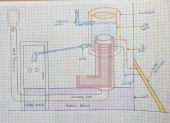
 7
7





 3
3




For all your Montana Masonry Heater parts (also known as) Rocket Mass heater parts.
Visit me at
dragontechrmh.com Once you go brick you will never go back!




 3
3




Silence is Golden
For all your RMH needs:
dragontechrmh.com
 8
8




 1
1




Silence is Golden
For all your RMH needs:
dragontechrmh.com




Our inability to change everything should not stop us from changing what we can.
 2
2




The holy trinity of wholesomeness: Fred Rogers - be kind to others; Steve Irwin - be kind to animals; Bob Ross - be kind to yourself
 1
1




“The most important decision we make is whether we believe we live in a friendly or hostile universe.”― Albert Einstein
 2
2





James 1:19-20
Not all those who wander are lost - J. R. R. Tolkien
 5
5




 3
3




Silence is Golden
For all your RMH needs:
dragontechrmh.com

 1
1




Our inability to change everything should not stop us from changing what we can.
 5
5








Silence is Golden
For all your RMH needs:
dragontechrmh.com




Silence is Golden
For all your RMH needs:
dragontechrmh.com
 1
1




Nothing is foolproof to a sufficiently patient fool!
I hate people who use big words just to make themselves look perspicacious.
 1
1




Silence is Golden
For all your RMH needs:
dragontechrmh.com





|
Spare the rod, spoil the child. Here, use this tiny ad named Rod:
Learn Permaculture through a little hard work
https://wheaton-labs.com/bootcamp
|



